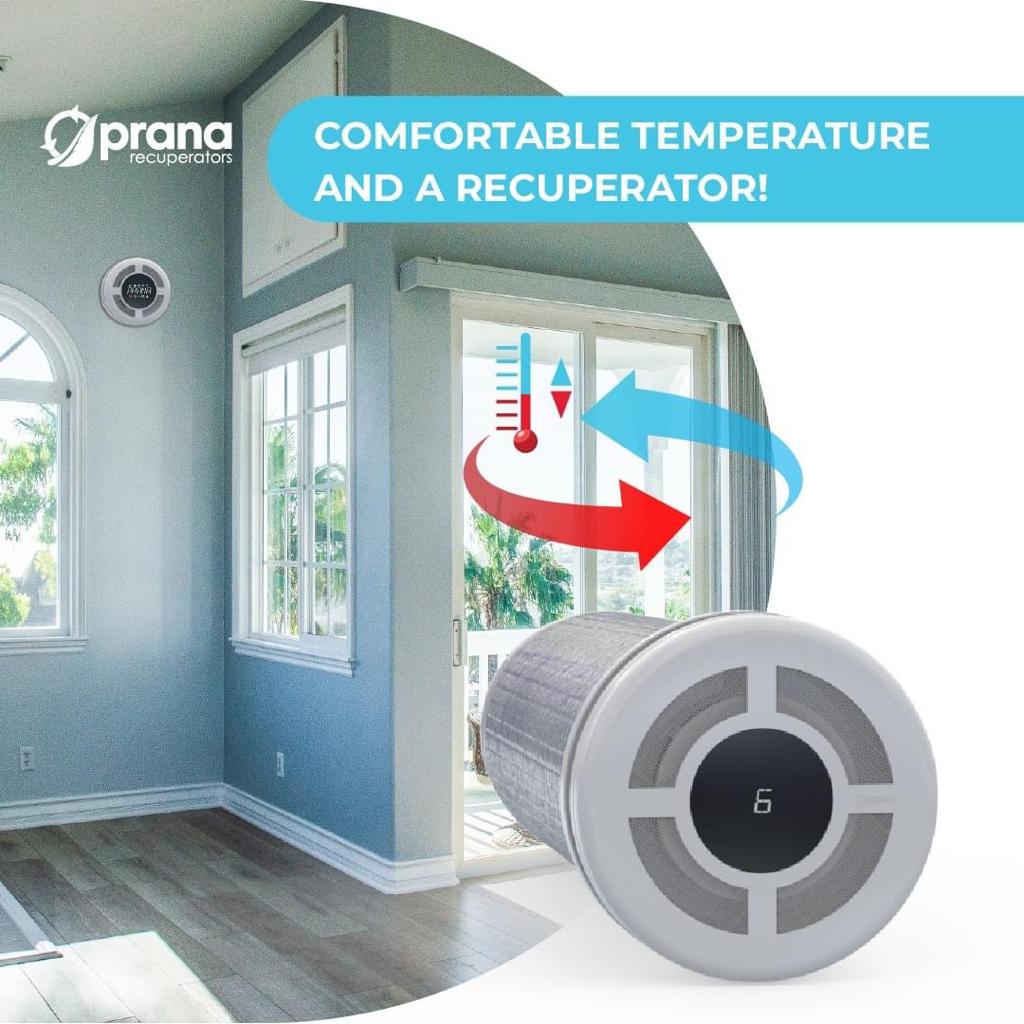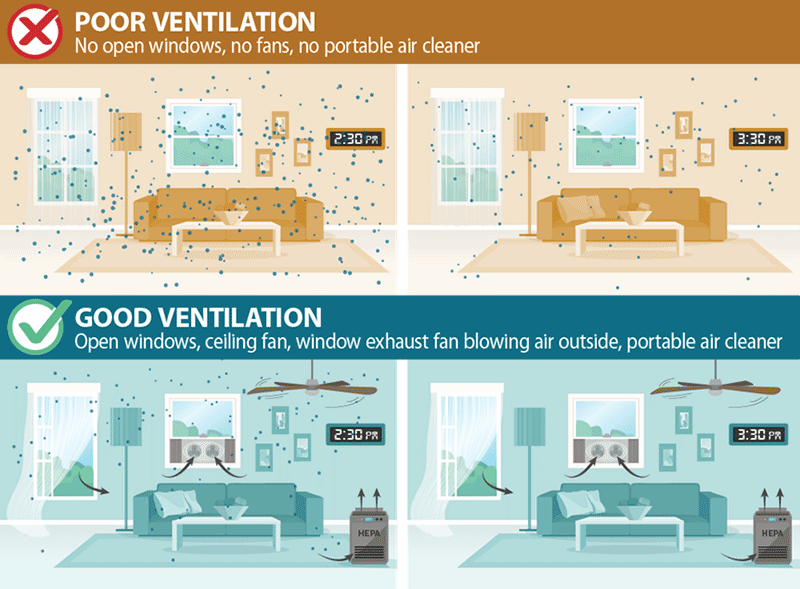Recognizing the Relevance of Home Air Flow for a Healthier Living Atmosphere
Home ventilation plays a crucial role in keeping a healthy living environment. It helps with the exchange of interior and outdoor air, which is crucial for boosting air high quality. Without appropriate air flow, homes can come to be reproducing premises for toxins and irritants. The effects of poor air flow can be substantial. This brings up the inquiry of how property owners can successfully carry out ventilation techniques to secure their health and well-being. Recognizing these techniques is vital.

The Fundamentals of Home Air Flow
Home air flow works as an important part of interior air quality and convenience. It entails the process of trading stale indoor air with fresh outdoor air, consequently reducing humidity and controlling temperature. Correct ventilation systems can consist of all-natural approaches, such as open home windows and vents, in addition to mechanical systems, such as exhaust fans and air exchangers. Efficient home air flow helps stop concerns like indoor mold and mildew growth and the accumulation of hazardous particles. It additionally boosts total energy performance, as well-ventilated spaces can keep comfy temperature levels with less reliance on home heating and cooling down systems. Recognizing the essentials of home ventilation is vital for homeowners seeking to create a much healthier living atmosphere for themselves and their families.

Typical Sources of Indoor Air Pollution

Several might not understand it, interior air pollution can stem from various resources within a house. Usual contributors include volatile organic substances (VOCs) given off from paints, solvents, and cleaning items. Home appliances, such as gas cooktops and fire places, can release hazardous gases like carbon monoxide gas and nitrogen dioxide. In addition, mold and mildew and mildew flourish in wet areas, launching spores that affect air quality. Family pet dander, allergen, and pollen can accumulate inside, further worsening contamination degrees. Smoking inside generates hazardous chemicals that stick around in the air. Building products, including asbestos and formaldehyde, can off-gas damaging substances. Acknowledging these resources is necessary for keeping a much healthier indoor setting and promoting efficient air flow methods.
Wellness Impacts of Poor Air Flow
Interior air contamination can have considerable health effects, especially when ventilation is insufficient. Poor ventilation can bring about the buildup of harmful contaminants, such as unstable organic compounds, mold, and particulate issue. This build-up may result in respiratory system issues, including bronchial asthma, allergic reactions, and chronic obstructive pulmonary illness. Individuals might experience symptoms like headaches, tiredness, and irritability of the eyes, nose, and throat. At risk populations, such as children and the elderly, are at higher threat for serious health and wellness results. Long-term exposure to poorly ventilated settings can additionally add to more serious conditions, consisting of heart diseases. Subsequently, ensuring appropriate air flow is essential for maintaining a healthy living setting and lowering the risk of health complications associated with interior air contamination.
Efficient Air Flow Approaches for Your Home
Proper air flow is essential for preserving a healthy indoor environment, and executing efficient methods can significantly improve air top quality. House owners can begin by making certain that exhaust fans are installed in washrooms and cooking areas to eliminate excess wetness and odors. Opening windows on a regular basis enables fresh air to distribute, specifically throughout mild climate. Additionally, utilizing air cleansers with HEPA filters can help capture airborne pollutants. For homes with home heating and cooling down systems, preserving HVAC systems and transforming filters routinely is vital for peak performance. Including all-natural ventilation strategies, such as cross-ventilation, can likewise improve air flow. Ultimately, securing any type of leaks in doors and windows avoids undesirable drafts, which More about the author can disrupt controlled air flow, eventually causing boosted interior air quality and comfort.
Maintaining Optimum Air Quality Year-Round
To preserve excellent air high quality year-round, property owners must embrace an aggressive strategy to managing their indoor atmosphere. Regularly keeping track of interior air top quality is essential; this includes checking for pollutants such as dirt, mold and mildew, and unpredictable natural substances (VOCs) Applying effective ventilation systems, such as exhaust followers and air cleansers, can significantly reduce air-borne impurities. Additionally, regular maintenance of heating and cooling systems guarantees peak performance and moved here air blood circulation. Home owners ought to additionally take into consideration humidity levels, as extreme moisture can bring about mold and mildew growth. Seasonal adjustments may necessitate adjustments in ventilation strategies to suit varying outside air quality. By prioritizing these techniques, home owners can produce a much healthier space, advertising total health for all residents throughout the year.
Regularly Asked Concerns
Just How Can I Tell if My Home Needs Much Better Air Flow?
To figure out if a home needs much better air flow, one should observe signs such as relentless humidity, mold growth, mildewy smells, condensation on home windows, or enhanced allergic reaction symptoms, indicating inadequate air movement and possibly poor indoor air high quality.
What Are the Indicators of Poor Indoor Air Top Quality?

Can Houseplants Improve Indoor Air High Quality Effectively?
The performance of houseplants in enhancing indoor air top quality is debated. While some research studies suggest they can absorb toxins and generate oxygen, see here their overall influence might be marginal contrasted to appropriate air flow and air purification systems.
How Typically Should I Change My Air Filters?
The frequency of air filter changes normally depends on usage and filter type. Usually, it is advised to change filters every 3 months, though families with allergies or family pets might call for even more constant modifications for ideal performance.
Exist Any Details Ventilation Systems for Allergy Sufferers?
Numerous ventilation systems, such as HEPA-filtered systems, effectively reduce irritants airborne. Home Ventilation Melbourne. These systems catch plant pollen, pet dog, and dirt dander, offering allergy patients with a cleaner, healthier interior atmosphere while taking care of air high quality properly
It promotes the exchange of indoor and outdoor air, which is crucial for boosting air quality. Home air flow serves as a vital component of interior air top quality and comfort. It entails the process of trading stale indoor air with fresh outside air, consequently reducing humidity and controlling temperature level. Indoor air contamination can have substantial health and wellness implications, specifically when ventilation is inadequate. Proper air flow is necessary for preserving a healthy and balanced indoor setting, and executing reliable techniques can substantially improve air quality.